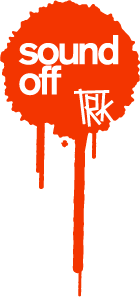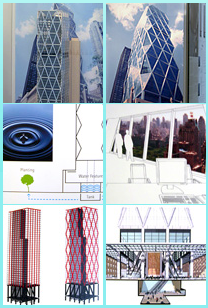Sound off 2: More of the same... (part 2)
 “Sound Off” is an op/ed post by editors of the Tricycle blog. The opinions may or may not reflect those of the Company.
“Sound Off” is an op/ed post by editors of the Tricycle blog. The opinions may or may not reflect those of the Company.
(... continued from part 1)
Lots of articles have examined the reasons why cause-led design is coming to the fore, so let’s peek at some of its effects. First is a backlash against a culture that has recently defined worth by celebrity status, and the creation of space for a celebrity of ideas rather than of personalities. When Brad Pitt recently narrated a PBS series on Green Design, the benefit seemed greater to the Pitt “brand” than to the Green Design movement. The result is that products that are great but might otherwise suffer anonymity and failure can make a real difference by tapping a timely cause.
There can also be real benefit to society. As the editors of Contract magazine said so articulately in their May issue, “Social awareness is at the core of good design... In 2006 the social responsibility theme resonates strongly not just in the design community, but throughout business and industry in general. In light of the devastation we have witnessed multiple times in our own country, along with enormous global issues, we are collectively impressed by the needs of many” (p54). Organizations like Architecture for Humanity are gaining attention like never before.
Curiously, however, sustainability was a contributing factor to the boredom at NeoCon. You couldn’t throw a stick in the exhibition halls without hitting... well, a stick. It seemed that every booth featured something green, or woody, or a clever tagline to catch the eye of sustainability-minded designers. And there was not a whole lot of transparency on the actual environmental footprint of products... which meant that booths that clearly presented hard data really stood out.
Sustainability isn't about billboard marketing. In fact, designing with sustainability in mind is a great way to keep it from becoming boring, more of the same-old same. Consumers like hearing the truth about manufacturing, especially if it’s a step in a good direction. And the need to create new and better materials mean that we are being offered raw materials for design work that are more interesting. And with better materials, the output of design projects have a great reason also to be more interesting (dare we say, inspiring?). Because designers find themselves asking timeless questions -- we are innovating, we are creating, we are pushing toward something. But toward what? And what if great things are possible?
To me, the greatest change away from boring recently has not been in products or in product marketing, but in buildings. Buildings are a great litmus test, because they are one of the few manufactured products in our economy that are built to last. We’ve heard about planned obsolescence and single-serving products for years, but it seems that today this been taken to new levels, where old products are being relaunched based on buyers’ lifecycles. E.g. my dad took me to see Superman in 1978, and I could take my kids to see what’s largely a re-write of this original, today. My daughters love My Little Pony -- launched in 1982, with a brand re-launch in 2003. See also The Longest Yard in ‘74 and ‘05, Willy Wonka flicks in ‘71 and ‘05, even the Texas Chainsaw Massacre in ‘74 and ‘03. Or the resurgence of Strawberry Shortcake (‘80) and Care Bears (‘81). UGH!! In a few years, watch for the Teenage Mutant Ninja Turtles to hit theaters and Toys’R’Us. Buildings, by their nature stand, in stark contrast. They are not built to be re-built in five, or even twenty-five years. As the Chair of LEED for Commercial Interiors has said, they are designed to last on this earth for longer than my lifetime. And in contrast to twenty-five years ago, buildings are being constructed in ways that are radically better for their environments... for their interior environment -- dovetailing with beautiful and ecologically savvy advances in interior design -- as well as for the human and ecological communities surrounding their footprint. Better materials used in better ways, to better ends... where ‘better’ isn’t just marketing spin, it can be explained and marketed (even at trade shows) in ways that demonstrate economic, environmental and social profits. To paraphrase Tibor Kalman’s classic quote: where design is not an end in itself, but a means to an end.
Buildings, by their nature stand, in stark contrast. They are not built to be re-built in five, or even twenty-five years. As the Chair of LEED for Commercial Interiors has said, they are designed to last on this earth for longer than my lifetime. And in contrast to twenty-five years ago, buildings are being constructed in ways that are radically better for their environments... for their interior environment -- dovetailing with beautiful and ecologically savvy advances in interior design -- as well as for the human and ecological communities surrounding their footprint. Better materials used in better ways, to better ends... where ‘better’ isn’t just marketing spin, it can be explained and marketed (even at trade shows) in ways that demonstrate economic, environmental and social profits. To paraphrase Tibor Kalman’s classic quote: where design is not an end in itself, but a means to an end.
Caleb Ludwick is Communications Director at Tricycle, Inc.
No comments:
Post a Comment